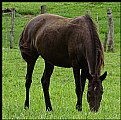| Photography Forum: Photography Help Forum: |
 |
Q. Top-quality lens choices for Canon

Asked by Daniel Guerin
(K=7961) on 12/7/2007
|
I'd like a little help in lens choices please. I have been saving for the 1ds mkIII but recently, reading rumours about a possible forthcoming 5d replacement, have decided that waiting for that, and spending my money on the best lens possible is probably a wiser thing to do.
Currently, I'm using my work equipment and, for my landscape work, specifically a 1d mkIIn with a Canon EF 17-35 f/2.8L lens. The chromatic aberration present in many of my contrasty landscape pics (even when stopped down) is horrendous, not easy to fix and a real surprise that such awful effects can come from what should be a high-end lens.
So I have a few questions which I hope you may help me answer...
1: If I bought the newer EF 16-35 f/2.8L II, am I likely to notice greatly reduced aberration? My existing lens can be terrible for it, it would have to be a marked improvement to justify the expense.
2: Because of my current troubles, I am still not quite convinced of the God-like status some attach to Canon L lenses. I am not devoted to a brand so how does the top-end units from the likes of Sigma compare? I will spend the money on the lens which produces the best picture, nothing less.
3: Should I buy a prime lens? I know the general feeling is that they produce better results, but do they produce incredibly noticeable better results? By buying prime, I obviously loose the convenience of a zoom - I would be happy to do this but if the difference in image quality is anything less than stunning, I might be best to go with the best zoom.
If anyone has wondered the same things, I'd love to hear from you and find out your solutions and the difference your choices made for you.
Thanks for your time,
|
|
|
|
|
|
|

Jeroen Wenting
 (K=25317) - Comment Date 12/7/2007
(K=25317) - Comment Date 12/7/2007
|
primes WILL produce superior results to zooms, no matter what people like Ken Rockwell care to tell you.
This is especially true for wideangle lenses.
Also, what you're seeing is typical of all large sensor DSLRs when used in combination with wideangle lenses.
The angle at which the light strikes the sensor causes more than one sensor element to be excited by each striking photon, causing the abberations you notice.
Very very good optics can reduce that somewhat but you'll never completely cure it unless the camera manufacturer changes to a lens mount with a far larger diameter.
That's the main reason why Nikon has for years resisted the temptation to produce a DSLR with a sensor that's larger than APS-C (and the decision to do so now with the D3 series is going to be a costly one for them in terms of customer satisfaction).
So a good prime will help you some, but most of what you're experiencing is inherent to the combination of a large sensor with a (too) small diameter lensmount that prevents light reaching the sensor at an angle near enough vertical when using wideangle lenses.
At most higher quality optics can aleviate the problem, they'll never be able to cure it.
What you may therefore consider instead is the purchase of another camera with an APS-C sized sensor, like the 30D. Those don't have the same problem as the most problematic areas of the image circle are removed by the smaller sensor.
|
|
|
|

Dave Holland
(K=13074) - Comment Date 1/1/2008
|
The newer Canon 17-40 f4 lens has reviews that are just as glowing as the 16-35II, for a lot less cash. You usually don't need that extra stop when shooting wide angle landscapes, so for my dollar I would look at the f4. Sadly, I can't say that reviews of Canon wide lenses are all that great, especially compared with recent Nikon reviews. Jerome's comments about the angle of light striking the sensor are interesting, and I have wondered if the Canon CMOS sensor might be more sensitive to that effect compared with the Nikon option. I keep thinking that Canon will come out with an outstanding wide option, but each year I get a little more frustrated. It makes me wonder if Canon might one day make a revolutionary change, incorporating a spherical, dish-shaped sensor to get edge sharpness right out to the periphery. But that would mean changing the fundamental concept of interchangable lenses on a single body, and it would be a hard sell for those of us who own a legion of older lenses that we want to use on new bodies.
I have the 16-35I, and it serves me OK with my APS sized sensor. My 15mm fisheye is really sharp, but because of distortion it's more of a special effects lens. The 14mm fixed lens is attractive, but price has swayed me away from that option. I also own a Canon 20mm 2.8, which has served me well in the past -- my copy is very sharp. The fixed 20 is really cheap, with an older autofocus mechanism. Reviews of the fixed 20 have varied, I think because quality has been variable as well. I don't know anything about third party lenses for Canon.
Dave
|
|
|
|
|
















